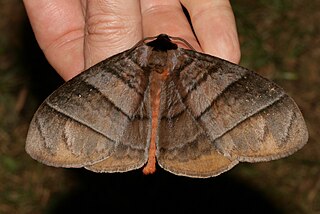
Lepidoptera, from Ancient Greek lepís “scale” + pterón “wing”) is an order of insects that includes butterflies and moths. About 180,000 species of the Lepidoptera are described, in 126 families and 46 superfamilies, 10 per cent of the total described species of living organisms. It is one of the most widespread and widely recognizable insect orders in the world. The Lepidoptera show many variations of the basic body structure that have evolved to gain advantages in lifestyle and distribution. Recent estimates suggest the order may have more species than earlier thought, and is among the four most speciose orders, along with the Hymenoptera, Diptera, and Coleoptera.
Krauseia is an extinct genus of small mammal from the Paleocene of North America. It was a member of the extinct order Multituberculata and is within the suborder of Cimolodonta, family Neoplagiaulacidae. The genus was nemed by Vianey-Liaud M. in 1986, and has also partly been known under the name Parectypodus.

The Pyraloidea are a moth superfamily containing about 16,000 described species worldwide, and probably at least as many more remain to be described. They are generally fairly small moths.

The de Havilland DH.60 Moth is a 1920s British two-seat touring and training aircraft that was developed into a series of aircraft by the de Havilland Aircraft Company.
Barbodes clemensi is a species of cyprinid endemic to Lake Lanao in Mindanao, the Philippines. It is one of the several species of fish in the Philippines known as bagangan. This species can reach a length of 23.5 centimetres (9.3 in) TL.
Torotix is a Late Cretaceous genus of aquatic birds. They lived along the shores of the Western Interior Seaway, but it is not clear whether they were seabirds or freshwater birds, as the genus is only known from a humerus. Consequently, the genus contains only one known species, Torotix clemensi. T. clemensi is represented by a single fossil specimen, a partial humerus recovered from the Lance formation of Wyoming, deposits dated to the very end of the Cretaceous period, 66 million years ago.
Macroglossum clemensi is a moth of the family Sphingidae. It is known from Sulawesi.
Macroglossum jani is a moth of the family Sphingidae. It is known from the Philippines.

Macroglossum is a genus of moths in the family Sphingidae.

Pseudojana perspicuifascia is a species of moth of the family Eupterotidae first described by Rothschild in 1917. It is found in Sundaland and on Nias.

The Erebidae are a family of moths in the superfamily Noctuoidea. The family is among the largest families of moths by species count and contains a wide variety of well-known macromoth groups. The family includes the underwings (Catocala); litter moths (Herminiinae); tiger, lichen, and wasp moths (Arctiinae); tussock moths (Lymantriinae), including the arctic woolly bear moth ; piercing moths ; micronoctuoid moths (Micronoctuini); snout moths (Hypeninae); and zales, though many of these common names can also refer to moths outside the Erebidae. Some of the erebid moths are called owlets.
Pseudojana is a genus of moths in the family Eupterotidae.
Pseudojana pallidipennis is a moth in the family Eupterotidae. It was described by George Hampson in 1895. It is found in Myanmar and the north-eastern Himalayas.
Pseudojana roepkei is a moth in the family Eupterotidae. It was described by Nieuwenhuis in 1948. It is found on Sulawesi.
Pseudojana vitalisi is a moth in the family Eupterotidae. It was described by L. Candèze in 1927. It is found in South-East Asia.
Pseudojana obscura is a moth in the family Eupterotidae. It was described by Jeremy Daniel Holloway in 1987. It is found on Borneo and Peninsular Malaysia. The habitat consists of lowland dipterocarp forests.
Schowalteria is a genus of extinct mammal from the Cretaceous of Canada. It is the earliest known representative of Taeniodonta, a specialised lineage of non-placental eutherian mammals otherwise found in Paleocene and Eocene deposits. It is notable for its large size, being among the largest of Mesozoic mammals, as well as its speciation towards herbivory, which in some respects exceeds that of its later relatives.








